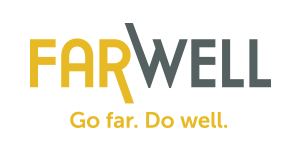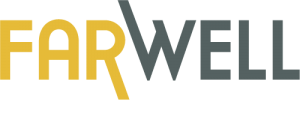Discover advisor articles and other FarWell resources.
Go far. Do well. Call (800) 987-2015
Discovering the ‘Who’ of Your Organization | Organizational Culture

Return on Investment | Process Optimization
November 20, 2018
Optimizing Process During Rapid Business Growth
February 1, 2019Your Organizational Culture Portrait Part 1
“I came to see, in my time at IBM, that culture isn’t just one aspect of the game, it is the game. In the end, an organization is nothing more than the collective capacity of its people to create value.”
– Louis V. Gerstner, Jr. Former CEO of IBM
Culture is all around us. Life in an organization is no different.
Organizational culture defines who the organization is internally and externally. What do the current mission and values statements say? Who do we think we are? How do we work together? Who are we really? Who do others think we are?
When looking at cultural organization, it is hard to sort out the influences driving behaviors. Those influences come from so many different sources, both internal and external. One way to view culture is to think of it as an artistic representational portrait.
Any picture has many colors and shapes that blend or contrast to create an overall effect. When we look at the whole it sends a message that can be consistent or contrasting.
The picture might be calming, intriguing, energizing, or jarring depending on the intent of the artist. But when we look closely at a painting, we see the separate colors, the intricate blending, and brush strokes that might differ greatly from the image we get from viewing the whole picture.
Each color is distinct but when placed next to others it gives a different overall blended effect. Red is red, but when it blends or abuts with pink rather than black it evokes a different message.
The components that make up an organizational culture are like colors in a picture. They are influential and interdependent, but looking at the whole — all relevant.
Culture truly is a complex combination of influences or integrated colors and shapes that create a cultural portrait of the ‘Who’ of an organization.
Step 1: Start an Organizational Culture Portrait
To change or nurture an organizational culture, it is essential to first look at the existing components and break down the component influences to understand and see the whole picture. This requires discussion between leaders, employees, stakeholders, and input from others who come in contact with the organization. The broader the input, the more realistic the picture.
The basis or portrait background of your organizational culture is the defined set of shared beliefs and values, related to the work environment. Those beliefs and values represent the basis for organizational behavior and relationships.
The strength and influence of the beliefs and values vary within organizations. Their dominance determines whether the basic background color is bright or faded. The background color that is chosen reflects the feel of the culture as defined by its members. Is it intense orange or is it a light green? Is it a solid color or are their gaps that diminish the influence of the beliefs and values? There is no right answer to these questions, just as there isn’t a universal, perfect culture that is right for every organization. The answer is an honest assessment of what exists within the current culture.
Take a value like trust. Does the level of trust add to the brightness and depth of the organization’s culture background color? Just because it is in the values statement on the wall doesn’t mean that everyone in the organization trusts each other. What part of the culture encourages trust and what part discourages trust? Is there a breakdown in communication? Is there a disconnect between work processes? Is there one influential leader who is spreading distrust? What is causing an environment of distrust?
Sorting out cultural influences of the beliefs and values takes careful analysis to ensure that any plans for change are both addressing the appropriate root cause of the issue and not negatively impacting something else that is working well. Thinking about how the organization’s values and beliefs are coming through in the organization’s culture portrait is a foundational exercise.

Step 2: Discover Organizational Culture Portrait Components
On top of the background there are multiple cultural influences such as leaders, employees, work processes, and industry regulations that add color and definition to the overall portrait of the organization’s culture. Each of these need to be analyzed in relation to each other.
Most organizations don’t start from scratch when it comes to culture. Even young organizations have a culture that was established by the people who started the organization. Organizations most often have a history with complex, long-standing roots that the current leaders inherited. There are frequently remnants of the historical culture that remain but may not be relevant to present-day organizational success. Some might have deep sentimental ties for long-term employees and leaders.
It is important to understand the cultural remnants and determine which are beneficial for the future and which need to be retired.
Organizations evolve through engineered changes and through bits of culture that are added organically. Some may be beneficial, while others are not useful or destructive. There have been many artists who have added to the cultural portrait over time. The resulting composite picture will form the current portrait from which any decision for improvement will be made. It is very important to take the time discover the cultural influences within the existing portrait before painting a portrait for the future.
Step 3: The Artist’s Perspective
People spend a significant amount of their life working in organizations and they are integral to the culture. Likewise, the culture of the organization becomes so ingrained that people’s interactions, decisions, and actions take place automatically. Motivations are assumed because they have always been that way. Culture is so ubiquitous for those who are living it, that it is hard to see what is all around them. It is like trying to describe the process of breathing air. We do it all the time without knowing how it works or thinking about it. Just as it is hard for individuals to see themselves as others see them, it is hard for people within organizations to view their culture objectively.
It is difficult to fully define a culture from within because the organization only sees what it wants to see in the mirror.
Embarking on current cultural state definition requires personal dedication and introspection from an organization’s leaders and employees. Culture analysis and revision can be an uncomfortable task since it requires taking an objective look at the behavior of the organization and its leaders.
What does the cultural portrait look like? Does it have a solid background? How do the influencing colors interact and blend with each other? Despite the challenges, the most important task for any group that wants to have an intentional culture, is defining the picture of who they are and then designing a new future portrait of who they want to be.
Cultural analysis doesn’t need to be so daunting if it is approached through a breakdown of the components that define and influence the overall portrait. When looking in the mirror at the whole, it is hard to separate out the most positive factors from those that are not useful or destructive. Breaking apart the components makes it easier to focus on areas that are most precious and useful, and those that need to change. This breakdown provides an understanding of the sources of the cultural influences and interactions that are beneficial or detrimental to the organization and provides direction for improvements.
Key Cultural Components
Stakeholders
Board members, owners, or stockholders are like the oval outline of the portrait. Stakeholders provide financial basis and high-level direction with varying degrees of influence. They function as the boundaries for the business.
Values & Beliefs
The stated values and beliefs of the organization are the background. Values and beliefs provide an underlying influence that impact behavior within the organization.
Business
The type of business is one influencing color. What the organization does makes a difference in the culture. A highly regulated or high risk business will have more significant influence on the culture portrait.
How We Do It
‘How we do things around here’ is one more color within the organization’s portrait. How we do it includes written and unwritten rules, processes and procedures grown through tradition and necessity.
Leaders & Employees
Employees and leaders are two additional colors in the culture portrait. They are the substance of the culture and add infinite variety. How employees work together and treat each other is the essence of culture. What kind of people are we? How do we treat each other? How do we work together?
External Suppliers and Customers
Suppliers and Customers are ribbons that spread through the organization and influence culture. Although these groups are external to the organization, they impact culture because of their dependency on the organization. The organization needs them, and they need the organization.
Community
Organizations don’t exist in a vacuum. The organization needs to consider the community where it lives when assessing culture. Employees bring their culture to work with them. A customer’s community can influence his or her interactions with the organization. How the organization supports and contributes to the community is part of their reputation. Community is the matting that exists around the portrait.
Market & Economy
The organization also exists within the external frame of a market and economic environment. The market and economy impact how the organization needs to operate. In a rapidly changing environment, an organization must have a culture that can adapt to change. Markets prone to high risk or heavy competition will impact the culture needed to survive.
Culture and Leadership Transformation Takeaway
Lead the vision for your company culture, define how the current portrait contributes to success, and go further to enhance your organizational culture to meet the challenges of the future.
Learn more about the impact of your hiring decisions in Part 2: Painting Your Organization’s Cultural Portrait. Every person who is hired can influence the culture of an organization or team within an organization. They bring their own knowledge, experiences, and beliefs and values. Everyone decides how to fit into the existing culture and if they will be a part of culture improvement or rebel against it.







